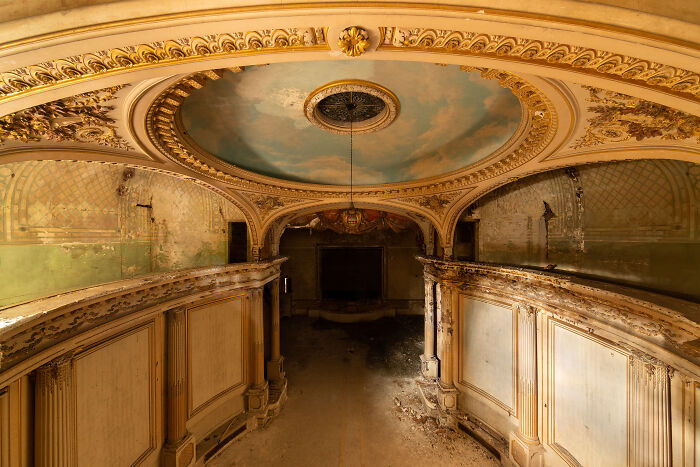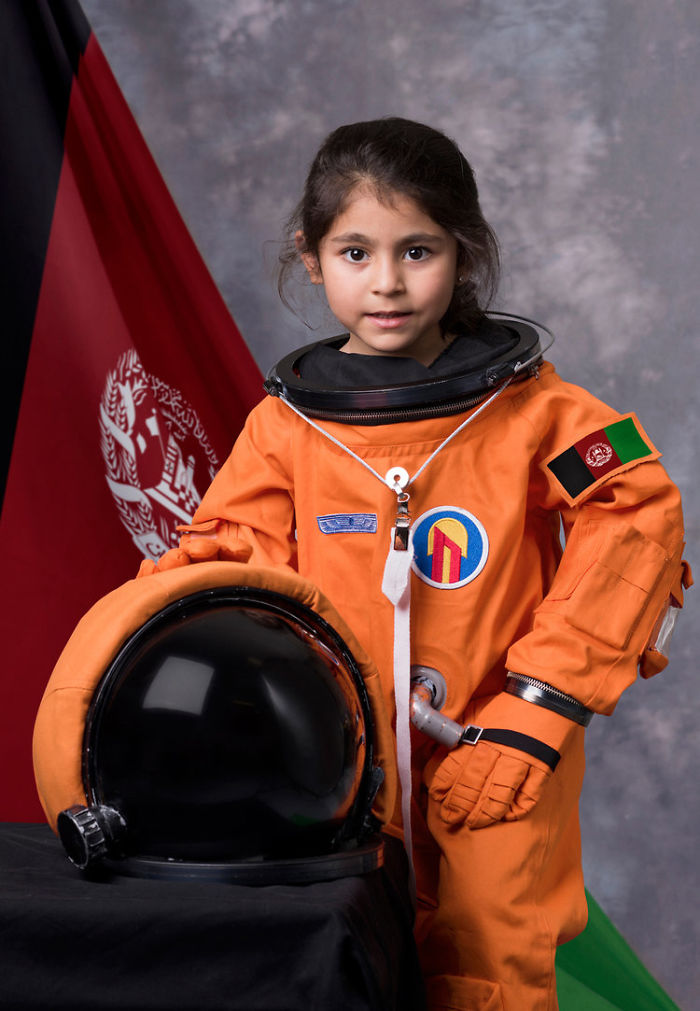
Nominees for the 2021 World Press Photo Contest Nominees were recently announced for the 64th annual World Press Photo Contest. The list includes contenders for the World Press Photo of the Year, World Press Photo Story of the Year, and World Press Photo Interactive of the Year.
“The nominated images, stories, and productions we introduce today present different perspectives of one of the most important years in recent history, marked by the impact of the COVID-19 pandemic and the social rights movements around the world. Amongst the nominees are remarkable stories of hope, resilience, and social change. I would like to thank the independent jury for their dedication and commitment in selecting the stories that mattered in 2020,” said Joumana El Zein Khoury, executive director of the World Press Photo Foundation.
The World Press Photo Foundation was founded in 1955 to connect the public with trustworthy photojournalism. Some captions for these nominated photos won't be available until the end of March. Winners will be announced on April 15th through an online ceremony.
Nominee, World Press Photo of the Year: 'Fighting Locust Invasion in East Africa' by Luis Tato (Spain) for The Washington Post
Story: In early 2020, Kenya experienced its worst infestation of desert locusts in 70 years. Swarms of locusts from the Arabian Peninsula had migrated into Ethiopia and Somalia in the summer of 2019. Continued successful breeding, together with heavy autumn rains and a rare late-season cyclone in December 2019, triggered another reproductive spasm.
The locusts multiplied and invaded new areas in search of food, arriving in Kenya and spreading through other countries in eastern Africa. Desert locusts, Schistocerca gregaria, are potentially the most destructive of the locust pests, as swarms can fly rapidly across great distances, traveling up to 150 kilometers a day.
A single swarm can contain between 40 and 80 million locusts per square kilometer. Each locust can eat its weight in plants each day: a swarm the size of Paris could eat the same amount of food in one day as half the population of France. Locusts produce two to five generations a year, depending on environmental conditions. In dry spells, they crowd together on remaining patches of land. Prolonged wet weather—producing moist soil for egg-laying, and abundant food— encourages breeding and producing large swarms that travel in search of food, devastating farmland.
Even before this outbreak, nearly 20 million people faced high levels of food insecurity across the East African region, challenged by periodic droughts and floods. COVID-19 restrictions in the region slowed efforts to fight the infestation as supply chains of pesticides were disrupted.
Caption: Henry Lenayasa, chief of the settlement of Archers Post, in Samburu County, Kenya, tries to scare away a massive swarm of locusts ravaging grazing area, on 24 April. Locust swarms devastated large areas of land, just as the coronavirus outbreak had begun to disrupt livelihoods.
Nominee, World Press Photo of the Year: 'Those Who Stay Will Be Champions' by Chris Donovan (Canada)
Story: The Flint Jaguars basketball team in Flint, Michigan, USA, embodies efforts to nurture stability, encourage mutual support and strengthen community spirit in a city struggling to survive. Flint, the birthplace of General Motors, is striving against outmigration caused by a precipitous decline in its motor industry, a health crisis brought about by the authorities switching water-supply sources without proper safeguards, and the systemic neglect of high-poverty, predominantly Black neighborhoods. Basketball is an integral part of Flint culture, and the city once produced dozens of big names at collegiate and professional levels.
For decades, four high school teams battled as fierce rivals. Now there is only one high school in town. The Flint Jaguars were established in 2017, merging the teams of the last two schools that remained at the time. In 2020, the team fought to turn around what had up until then been a nearly winless history. By March, they were prepared to head to the division finals with an 18-4 record, having won more games in 2020 than in the previous three years combined. Their play-off run ended prematurely when COVID-19 forced the cancellation of the season. Nevertheless, the student athletes had had a taste of collective success.
Caption: Flint Jaguars team star Taevion Rushing jumps from one locker to another in the team locker room before the last regular season game of his high school basketball career, on 24 February 2020. He aims to go on to play basketball at a junior college.
Nominee, Contemporary Issues Singles: 'Doctor Peyo and Mister Hassen' by J (France)
Story: The Second Nagorno-Karabakh War began on 27 September, and conflict continued until 9 November. It was the worst fighting between Armenia and Azerbaijan over the disputed territory since the First Nagorno-Karabakh War in the 1990s. The first war ended in an uneasy ceasefire, with victorious ethnic Armenians unilaterally declaring an independent state, and sending hundreds of thousands of Azerbaijanis into exile.
In the intervening 30 years, little was done to resolve the status of Nagorno-Karabakh, which was still internationally recognized as belonging to Azerbaijan, and there were periodic military clashes between the two sides, which escalated into war in 2020. In a settlement brokered by Russia in November, Azerbaijan regained possession of territory lost in the 1990s, but the regional capital, Stepanakert, was left under Armenian control. The Armenian army gradually withdrew from the Nagorno-Karabakh region, to be replaced by Russian peacekeeping forces, who will be deployed until 2025.
Animal-assisted therapy, also known as pet therapy, is used in many clinical environments, especially in psychological therapy and palliative care. Animals appear to be able to reduce anxiety and stress, and also to have physical effects, such as lowering blood pressure, improving heart rate, or helping in pain management.
In hospices, the aim is to use the natural bond between humans and animals to provide comfort, peace, and companionship to terminally ill patients. Horses seem particularly suited for palliative care as they are especially in tune with their surroundings. Peyo works with his trainer Hassen Bouchakou at Les Sabots du Coeur, an organization devoted to animal-assisted therapy, and to scientific research into the subject. He supports around 20 patients each month, and scientists are now studying his instinctive ability to detect cancers and tumors.
Caption: Marion (24), who has metastatic cancer, embraces her son Ethan (7) in the presence of Peyo, a horse used in animal-assisted therapy, in the S
Nominee, Environment Stories: 'Pantanal Ablaze' by Lalo de Almeida (Brazil), Panos Pictures, for Folha de S
Story: Nearly a third of Brazil’s Pantanal region—the world’s largest tropical wetland and flooded grasslands, sprawling across some 140,000 to 160,000 square kilometers—was consumed by fires over the course of 2020. According to Brazil's National Institute for Space Research, there were triple the amount of fires in 2020 compared to 2019. Fires in the Pantanal tend to burn just below the surface, fueled by highly combustible peat, which means they burn for longer and are harder to extinguish.
The Pantanal, which is recognized by UNESCO as a World Biosphere Reserve and is one of Brazil’s most important biomes, is suffering its worst drought in nearly 50 years, causing fires to spread out of control. Many of the fires started from slash-and-burn farming, which has become more prevalent due to the weakening of conservation regulation and enforcement under President Jair Bolsonaro’s administration. The Brazilian Institute of the Environment and Renewable Natural Resources (IBAMA) has seen its funding reduced by around 30 percent.
Bolsonaro has frequently spoken out against environmental protection measures, and has made repeated comments undermining Brazilian courts’ attempts to punish offenders. Environmentalists say that this is encouraging agricultural burning and creating a climate of impunity. Luciana Leite, who studies humanity’s relationship with nature at the Federal University of Bahia, predicts the total collapse of the Pantanal, if current climate trends and anti-environmental policies persist.
Caption: Not available at this time.
Nominee, General News Stories: 'COVID-19 Pandemic in France' by Laurence Geai (France)
Story: The first confirmed cases of COVID-19 in Europe were reported in France on 24 January. Reports of infections in other European countries followed quickly, and on 13 March the World Health Organisation declared Europe to be the epicenter of the pandemic. By the end of March, Paris and its suburbs accounted for more than a quarter of the 29,000 confirmed infections in French hospitals, with 1,300 people in intensive care.
France went into home lockdown between 17 March and 11 May, with restrictions in Paris being extended to 14 June. Schools, caf was only 5,000.
Specially converted trains transported patients from overcrowded hospitals to regions that had fewer cases, and the French military airlifted critical cases from eastern France to hospitals in neighboring countries. As the death rate rose, morgues filled to capacity and ad hoc mortuaries were opened in places like the refrigeration hall of Paris’s Rungis wholesale food market. Funeral homes were ordered to bury or cremate bodies immediately, without any ceremony, mortuary preparation, or anyone in attendance.
Caption: Not available at this time.
Nominee, General News Stories: 'Cross-Border Love' by Roland Schmid (Switzerland)
Story: Switzerland closed its borders for the first time since the Second World War, as a consequence of the COVID-19 pandemic. In towns like Riehen and Kreuzlingen, citizens had barely noticed the borders with Germany for decades, and had crossed freely. The closure lasted from 16 March to 15 June. Barrier tapes indicated boundaries that should not be crossed, retracing borders that had been reinforced with barbed wire during the war.
In some places, these barriers became meeting places for people who were no longer allowed to be together. Despite regulations to restrict movement and socializing, many individuals found inventive ways to see their loved ones.
Caption: Not available at this time.
Nominee, Long-Term Projects: 'Habibi' by Antonio Faccilongo (Italy), Getty Reportage
Story: Nearly 4,200 Palestinian security detainees are being held in Israeli prisons, according to a February 2021 report by human rights organization B’Tselem. Some face sentences of 20 years or more. To visit a Palestinian prisoner in an Israeli jail, visitors have to overcome a number of different limitations resulting from border laws, prison regulations, and restrictions set by the Israel Security Agency (ISA).
Visitors are usually allowed to see prisoners only through a transparent partition, and talk to them via a telephone receiver. Conjugal visits are denied and physical contact is forbidden, except for children under the age of ten, who are allowed ten minutes at the end of each visit to embrace their fathers.
Since the early 2000s, long-term Palestinian detainees hoping to raise families have been smuggling semen out of prison, hidden in gifts to their children. Semen is secreted in a variety of ways, such as in pen tubes, plastic candy wrappers, and inside bars of chocolate. In February 2021, Middle East Monitor reported that the 96th Palestinian baby had been born using sperm smuggled from Israeli prison.
Habibi, which means ‘my love’ in Arabic, chronicles love stories set against the backdrop of one of the longest and most complicated conflicts in modern history. The photographer aims to show the impact of the conflict on Palestinian families, and the difficulties they face in preserving their reproductive rights and human dignity. The photographer chooses not to focus on war, military action, and weapons, but on people’s refusal to surrender to imprisonment, and on their courage and perseverance to survive in a conflict zone.
Caption: A portrait of Mazen Rimawi, a former Palestinian political prisoner and uncle to Majd Rimawi, whose father is serving a 25-year sentence, on 22 December 2019. Majd was born in 2013, following IVF.
Nominee, Long-Term Projects: 'Reborn' by Karolina Jonderko (Poland)
Story: ‘Reborn’ babies first appeared in the 1990s. Each is unique, carefully crafted by artists known as ‘reborners’. The hyper-realistic reborn babies are created with such details as birthmarks, veins, implanted hair, pores, tears, and saliva. More sophisticated reborns are equipped with electronic systems capable of reproducing the heartbeat, breathing, and sucking of a real baby.
Most of the dolls are made of vinyl, though the more realistic ones are made from silicone. Human hair is used for eyelashes, and completed dolls are sometimes perfumed with a ‘new baby’ smell. Reborn babies are available whole and in kit form, and can be purchased online and at fairs. The process of buying a reborn can be done in such a way as to simulate adoption: dolls come with ‘adoption’ or ‘birth’ certificates.
Reborn babies have been used in pediatric training to teach students practical childcare skills, and the use of the dolls in care homes has been shown to help reduce disruptive behaviour in people with dementia. While most reborn owners are doll collectors, others have experienced miscarriage, neonatal deaths, have no means for adoption, or suffer from empty nest syndrome, and may use the doll as a substitute for a child.
The photographer wished to explore the phenomenon of how artificial babies evoke genuine emotional response in adults. Each woman portrayed in this project has a personal motivation for having a reborn baby. Some who cannot have, or who have lost, a baby, give their love to an artificial one, looking after them, changing them, and buying them clothes. For some, the dolls are a means of dealing with loss or anxiety; for others they provide companionship.
Caption: Not available at this time.
Nominee, Portraits Stories: 'The "Ameriguns"' by Gabriele Galimberti (Italy) for National Geographic
Story: According to the Small Arms Survey– an independent global research project based in Geneva, Switzerland–half of all the firearms owned by private citizens in the world, for non-military purposes, are in the USA. The survey states that the number of firearms exceeds the country’s population: 393 million guns to 328 million people.
Gun ownership is guaranteed by the Second Amendment of the US Constitution, which dates from 1791 and has long been a controversial issue in American legal, political, and social discourse. Those who argue for the repeal of the Second Amendment or introduction of stricter gun control say that the Second Amendment was intended for militias; that stronger regulation will reduce gun violence; and that a majority of Americans, including gun owners, support new restrictions.
Second Amendment supporters state that it protects an individual’s right to own guns; that guns are needed for self-defense against threats ranging from local criminals to foreign invaders; and that gun ownership deters crime rather than causes more crime. According to the independent Gun Violence Archive (GVA), the US has had more mass shootings than any country on the planet, with 633 mass shootings in 2020 alone.
Caption: Not available at this time.
Nominee, Portraits Stories: 'The "Ameriguns"' by Gabriele Galimberti (Italy) for National Geographic
Story: According to the Small Arms Survey– an independent global research project based in Geneva, Switzerland–half of all the firearms owned by private citizens in the world, for non-military purposes, are in the USA. The survey states that the number of firearms exceeds the country’s population: 393 million guns to 328 million people.
Gun ownership is guaranteed by the Second Amendment of the US Constitution, which dates from 1791 and has long been a controversial issue in American legal, political, and social discourse. Those who argue for the repeal of the Second Amendment or introduction of stricter gun control say that the Second Amendment was intended for militias; that stronger regulation will reduce gun violence; and that a majority of Americans, including gun owners, support new restrictions.
Second Amendment supporters state that it protects an individual’s right to own guns; that guns are needed for self-defense against threats ranging from local criminals to foreign invaders; and that gun ownership deters crime rather than causes more crime. According to the independent Gun Violence Archive (GVA), the US has had more mass shootings than any country on the planet, with 633 mass shootings in 2020 alone.
Caption: Not available at this time.
Nominee, Sports Singles: 'Tour of Poland Cycling Crash' by Tomasz Markowski (Poland)
Story: Groenewegen had deviated from his line, veering towards the right barrier and leaving little room for his teammate, sending Jakobsen crashing over the barricade. The two had been competing for first place in the stage, and were traveling at around 80 kilometers per hour.
Jakobsen sustained severe injuries, underwent a five-hour operation, and spent a week in intensive care. Groenewegen broke his collarbone. He was disqualified from the race and received a nine-month suspension from the Union Cycliste Internationale (UCI). Jakobsen was awarded first place for stage one.
Caption: Dutch cyclist, Dylan Groenewegen (left), crashes meters before the finish line, after colliding with fellow team member Fabio Jakobsen during the first stage of the Tour of Poland, in Katowice, Poland, on 5 August.
Nominee, Nature Stories: Taal Volcano Eruption by Ezra Acayan (Philippines) for Getty Images
Story: Taal volcano, in Batangas province, on the island of Luzon in the Philippines, began erupting on 12 January, spewing ash up to 14 kilometers into the air. The volcano generated ashfalls and volcanic thunderstorms, forcing evacuations from the surrounding area. The eruption progressed into a magmatic eruption, characterized by a lava fountain with thunder and lightning.
According to the Department of Social Welfare and Development, a total of 212,908 families, nearly 750,000 people, were affected by the eruption. Damage caused to infrastructure and livelihoods, such as farming, fishing and tourism, was put at around US$70 million. Taal volcano is in a large caldera filled by Taal Lake, and is one of the most active volcanoes in the country. It is a ‘complex volcano’, which means it doesn't have one vent or cone but several eruption points that have changed over time.
Taal has had 34 recorded historical eruptions in the past 450 years, most recently in 1977. As with other volcanoes in the Philippines, Taal is part of the Pacific Ring of Fire, a zone of major seismic activity that has one of the world's most active fault lines.
Caption: Not available at this time.
Nominee, Sports Stories: 'Faces of Bridge' by Henrik Hansson (Sweden)
Story: Bridgeklubb i Borlply bridge) has its origins in the 16th century, in what were known as trick-taking games, but evolved into its present form in the 19th and 20th centuries.
Today’s game is based on rules set out by Harold Stirling Vanderbilt, an American railroad executive, in 1925. A World Bridge Federation coordinates revision of laws, and conducts world championships. Duplicate bridge, in which the same deal of cards is used at each table, is the most widely employed variation of contract bridge in club and tournament play. Bridge, as with chess, is recognized as a ‘mind sport’ by the International Olympic Committee, although neither has yet been found eligible for the main Olympic program. The Swedish Bridge Federation currently has around 27,000 members and operates an annual bridge festival with more than 8,500 tables in play.
Caption: Not available at this time.
Nominee, Spot News Stories: 'Port Explosion in Beirut' by Lorenzo Tugnoli, (Italy), Contrasto
Story: At around 6pm on 4 August, a massive explosion, caused by more than 2,750 tons of high density ammonium nitrate, shook Lebanon’s capital Beirut. The explosive compound was being stored in a warehouse in the port. Some 100,000 people lived within a kilometer of the warehouse. The explosion, which measured 3. 3 on the Richter scale, damaged or destroyed around 6,000 buildings, killed at least 190 people, injured a further 6,000, and displaced as many as 300,000.
The ammonium nitrate came from a ship that had been impounded in 2012 for failing to pay docking fees and other charges, and apparently abandoned by its owner. Customs officials wrote to the Lebanese courts at least six times between 2014 and 2017, asking how to dispose of the explosive. In the meantime, it was stored in the warehouse in an inappropriate climate. It is not clear what detonated the explosion, but contamination by other substances, either while in transport or in storage, appear the most likely cause.
Many citizens saw the incident as symptomatic of the ongoing problems the country is facing, namely governmental failure, mishandling and corruption. In the days after the blast, tens of thousands of demonstrators filled the streets of central Beirut, some clashing with security forces and taking over government buildings, in protest against a political system they saw as unwilling to fix the country’s problems.
Caption: Not available at this time.
. dpreview.com2021-3-17 19:30






